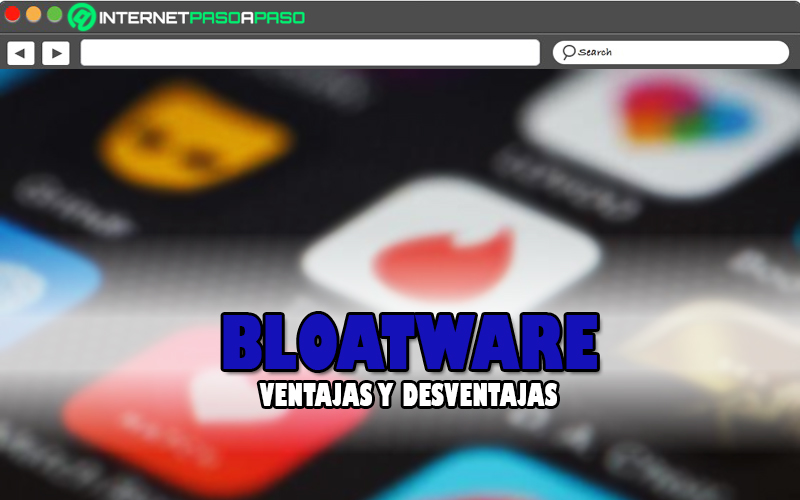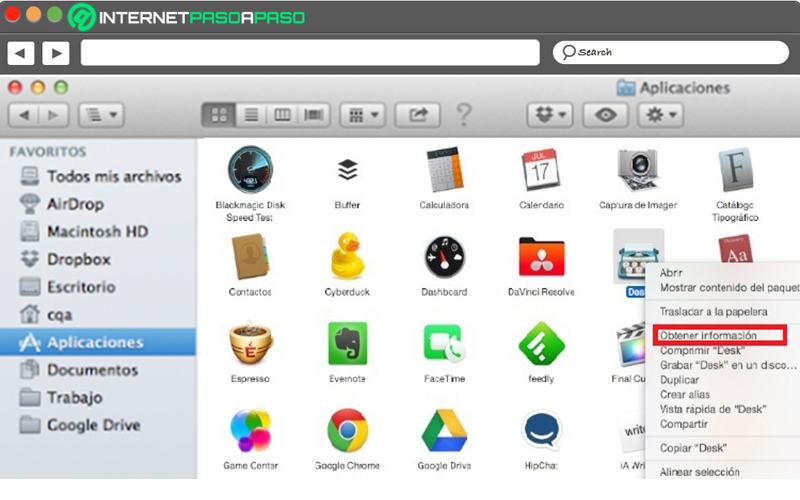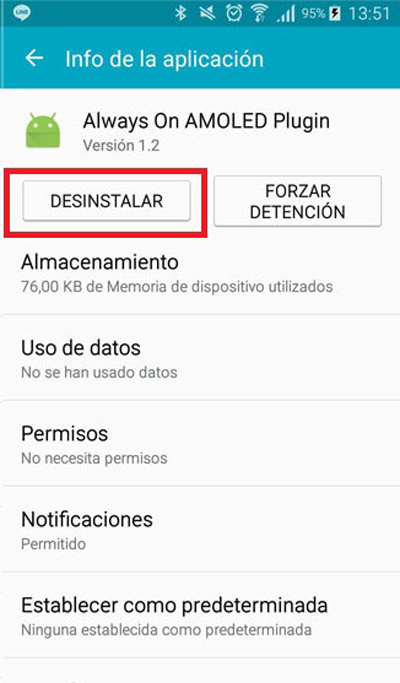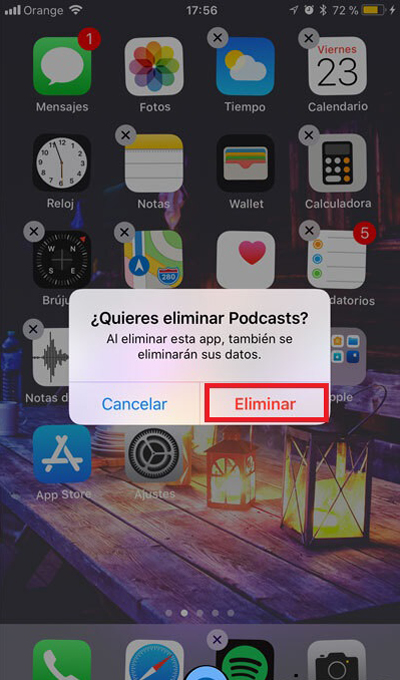
Index:
UPDATED ✅ Do you want to know more about what a Bloatware program is and all its features and advantages? ⭐ ENTER HERE ⭐ and Learn all about it
With the extensive development of computing, there are numerous terminologies that exist today and that many users are unaware of; this being the case of the term “bloatware”. Which, they usually associate with something negative, because it contains the word “ware”, such as malware, adware, ransomware, etc. However, bloatware is not associated with any of this.
In this sense, it is necessary to know what is bloatware and what is it forsince it is a topic of interest for the vast majority of users, given that all devices suffer from it, although it is not something harmful. However, it is advisable to control it and even eliminate it, because it can affect the performance of computers and mobile devices.
Thus, in view of the importance that this term has acquired and due to the significance it reveals for the teams, it is necessary to detail what it is for, its pros and cons, as well as the procedures to carry out to eliminate this type of programs and applications easily. We will even mention some examples to better understand what bloatware is.
What is bloatware or bloatware and what is it used for?
Currently, bloatware refers to all software or applications that are included or pre-installed on a given device. In other words, they are programs that come from the factory and are present both on desktop machines and on mobile devices (especially Android).
In general, a bloatware or bloatware is completely harmless and is usually of no interest to users. But, usually, it is considered that all software or apps of this type, take up a lot of space and consume more resources than expectedso they significantly influence the hard drive of a computer or the RAM of a terminal. Even, in certain cases, they violate the privacy of users.
In this sense, bloatware can be those applications as essential as the camera, image gallery or contacts, for example. But, they also go beyond that and, therefore, these are some additional applications that belong to the manufacturer or a third party company and are pre-installed by default.
Thus, bloatware-type programs or apps are used so that their developers can monetize devices beyond the final purchase price, so they pay manufacturers to add them pre-installed on computers. That way, they hope to encourage each and every user to use them, given that they remain hosted on the mobile or the computer. Which usually outrages users and, above all, when they are teams that already have a high cost. Also, while they try to make sure that the bloatware on their computers is safe, they can also reveal the presence of malware under certain circumstances.
On the other hand, it is necessary to distinguish that this term has been extended over time. Since, initially, bloatware was used to refer to all the programs that were really unnecessary on a computer due to their basic functions and that, even if, took up a disproportionate amount of space and decreased device memory. Which means that it was simply a software that offered minimal functionality to the user while it required an inordinate amount of space.
Why are these apps installed on my devices?

As mentioned above, bloatware is pre-installed on devices. in order to be able to monetize them beyond their final purchase price. Assessing that the creators of said applications or programs pay the manufacturers of the computers or mobile phones in order to include them from the factory.
Therefore, the number of applications of that class that are installed on your computers, it will simply depend on how many collaborators there are behind it. So if, for example, it is a mobile phone offered by a telephone operator, it will surely have other applications of that company installed. In addition, all those manufacturers such as Samsungthey are also responsible for adding their own bloatware on the devices they sell.
Thus, the main objective of all this, is to motivate the users of those computers or smartphones to use the software or applications that are installed from the factory and thus earn more money. Bearing in mind that, generally, people choose to use an app that is already installed instead of downloading another that has the same function.
Advantages and Disadvantages of bloatware. Is it really necessary to have them?
Now, because there is a possibility to remove bloatware, users often wonder whether it is really necessary to leave the bloatware installed or whether it is better to remove it from the computer. So, in order to determine this, it is worth distinguishing what are the main advantages and disadvantages of having said type of apps or software on a computer.
So then We point out the most interesting:

Advantage
In the case of the best benefits that relieve bloatware, also known as “crapware”we point out that they are very few and, at this point, We narrow down what it is:
- Comfort when carrying out a certain task: Several of the programs or applications that come installed from the factory are of great help to carry out certain tasks easily. As, prevent downloading a new tool containing the same functions.
- They are usually harmless programs and apps: Thanks to the fact that its developers focus on providing a solution with total security, most of the bloatware they are harmless and do not negatively influence the privacy of their users. But, this does not always happen.
- They allow testing the services of a final version: In some circumstances, these are simply trial programs that expire after a short time. In this way, they are ideal to test their definitive version and with it, the user will be able to decide or not, if he wishes to acquire it and/or pay for it.
- They can be very useful: Basically, they are applications suitable for reading QR code, recorders, calculators or a calendar. This is useful for any common user.
Disadvantages
However, beyond the advantages that they provide to their users, the truth is that bloatware is better known for its cons and, Precisely for this reason, it is also known by the derogatory name “crapware”.
Here are the main disadvantages:
- Tend to slow down computers: If a computer or smartphone has many bloatware, will show much slower operation than usual. Therefore, the processing speed will be impaired and its users will not be able to take full advantage of it, since each action executed from the computer will become cumbersome.
- Consume a lot of RAM or hard drive: Because they are usually programs and applications that they have a remarkable weightnegatively influence the device because they reveal a greater use of the hard disk or expenditure of RAM memory.
- They can be insecure: Although many developers focus on providing solutions with complete security, the truth is that many bloatware reveal significant privacy problems for users. In such a way, the risks of contracting any type of malware in the operating system, increase in full.
- They are some kind of deception: Being a form of monetization by the manufacturers themselves, they are considered a deception for buyers. As, in a way, these end up paying more than expected due to the presence of so many programs and filler applications that may even have a monthly cost after a free trial period.
- May be unusable for many users: Although some bloatware is very helpful in completing certain tasks without the need to download a new tool, the truth is that most bloatware they are useless and even ignored by users. Thus, they only occupy a space that could be used in a better way.
Steps to remove pre-installed bloatware from my computer to free up space
In view of the risks and disadvantages that bloatware exhibits by its very nature, there is the possibility of eliminating said programs or applications pre-installed on your computers, in order to have better performance of them and prevent the hard drive or RAM from becoming damaged. be affected.
We detail below the steps to follow to delete a pre-installed program in the different operating systems:
On Windows 10

In the case of Windows 10, it is known that it is an operating system that is already installed and configured on many computers. Therefore, users simply have to create an account, establish an internet connection and install the softwares they want.
However, it also stands out for being an OS that usually has several applications pre-installed, apart from Microsoft Office 365. In most cases, these bloatware are trial versions that do nothing is to fill disk space and consume system resourcesso it is more opportune to eliminate them.
Here, the official procedure to carry out in W10 for that:
- Go to the Start menu and Go to the Settings option.
- Now, Go to “Applications” then click on “Applications and features”.
- Once the above is done, you will find the list of installed applications. From there, you have to choose each one for, then press the “Uninstall” button.
You can also proceed as follows:
- The first thing you have to do is search Control Panel directly from Home (in the search bar).
- After that, you should click on “Uninstall program”.
- Finally, you will see the list of installed applications and just select the bloatware you want to remove it.
Additionally, there is another simpler way that only consists of looking for the application icon from the Start menu, select it and click on the “Uninstall” option.
on macOS

On the other hand, around Mac computers, there is also the possibility to delete bloatware easily. That is, its users can delete language files, browser extensions and useless apps that are pre-installed on the machine, without any inconvenience.
Here, we detail each step by step to execute:
- Mainly, open the “Applications” folderfind and select the program or application you want to remove from your computer.
- Now, right-click on that app and choose the option “Get information”.
- After that, scroll to the bottom of the window and click on the padlock iconto enter the indicated password there.
- Subsequently, in “Sharing and permissions”, you will need to specify that all users have read and write permissions. So that, if you have administrator permissions on the Macyou can delete the app in question.
On the other hand, if you prefer to remove all the bloatware you have on your Mac quickly, you can use a dedicated professional tool known as “CleanMyMac” and it consists of a cleaning application that offers a complete kit of tools to erase everything you want on your computer.
To proceed to delete the filler programs, download this tool and in its main menu, go to “Extensions and Uninstaller” to remove the bloatware present easily.
on Android
In the case of Android mobile phones and tablets that come with various bloatware from the factory, there is also a possibility to delete such bloatware from the devices easily. However, it is good to know that some apps require root permissions and others do not, in order to complete their uninstall.
Next, we explain how you can do it in the most usual way:
- To start, go to the Terminal Settings menu and go to the “Applications” option.
- Now, among all the applications, look for the one that is pre-installed that you want to delete from the mobile or tablet and access it.
- Next, in all its details, see if it has the button “Uninstall” (and not “Deactivate”). In case it contains it, you can get rid of the application forever.

On the other hand, if the app does not have the button to uninstall it, You can only uninstall it if you root the mobile or, if you acquire superuser permissions. Which is not the most attractive for many users and, therefore, Here we will show another way to disable the app without many inconveniences:
- Go to the Settings menu of the device and Go to “Applications”.
- Subsequently, proceed to search for the app that you want to deactivate and go to your information screen.
- Then you just have to press the “Deactivate” button. In this way, you will get an acceptable result without rooting and you will also be able to recover a little space, since these apps will no longer be executed.

on iOS
As of the arrival of iOS 10, there is the possibility of removing many of the pre-installed Apple applications on the iPhone and iPad. Taking into account that some of them cannot be deleted in any way, such as: App Store, Settings, Search, Messages, Photos, Health, Wallet and Clock.
Clarified this, it is necessary to explain each step by step to follow to get rid of bloatware from your iPhone or iPad, quickly:

- The first thing you have to do is go to the icon of the pre-installed app on the device.
- Next, press and hold said icon and when the device emits a vibration, you must press the cross shown there.
- After the above and finally, you will have to Press the “Delete” option and that’s it.
Once you carry out this procedure, the functions performed by the application in question, will disappear immediately or even, in some cases, move to other native applications of the iPhone or iPad.
List of most popular bloatware programs of the main operating systems
Finally, it is of great interest to know what are the bloat programs or applications of each of the operating systems named above. Therefore, we have created a list through which you will know the bloatware that is occupying space on your computer or mobile and thus, you can proceed to eliminate them, in case you do not use them:
Windows
On Windows 10 PCs, the most famous bloatware programs are the following:
- Paint.
- Calculator.
- Camera.
- Photos.
- Alarms and clock.
- Calendar and Mail.
- Messages.
- Maps.
- News.
- Time.
- Voice recorder.
- Xbox GameBar.
Mac
Apple computers also exhibit various famous “inflated softwares” and, next, we proceed to name them:
- Photos.
- Safari.
- Apple Mail.
- iTunes.
- iMovie.
- iBooks.
- Garage Band.
Android
Android devices, both smartphones and tablets, are also characterized by containing various bloatware-type applications. Then, In order to know the most popular, we have made this list:
- Play Store.
- Messages.
- Contacts.
- Clock.
- Calendar.
- Google (Chrome, Gmail, Maps, Drive, YouTube, Photos, Duo, and Play Movies).
- Gallery.
- Camera.
- Microsoft apps.
- GameLauncher.
- Radio.
- Telephone.
iOS
Finally, we refer to the most recognized filling applications of an iPhone and iPad, valuing that They are also the ones that the system allows you to uninstall without any problem.:
- Facetime.
- Apple Watch.
- Contacts.
- Bag.
- Music.
- Weather.
- iCloudDrive.
- iTunes Store.
- Find my friends.
- Calculator.
- Calendar.
- Mail.
- Maps.
- Reminders.
- House.
- News.
- Grades.
- Voice notes.
- Tips.
- Podcasts.
- Videos / TV.
- iBooks.
Computing